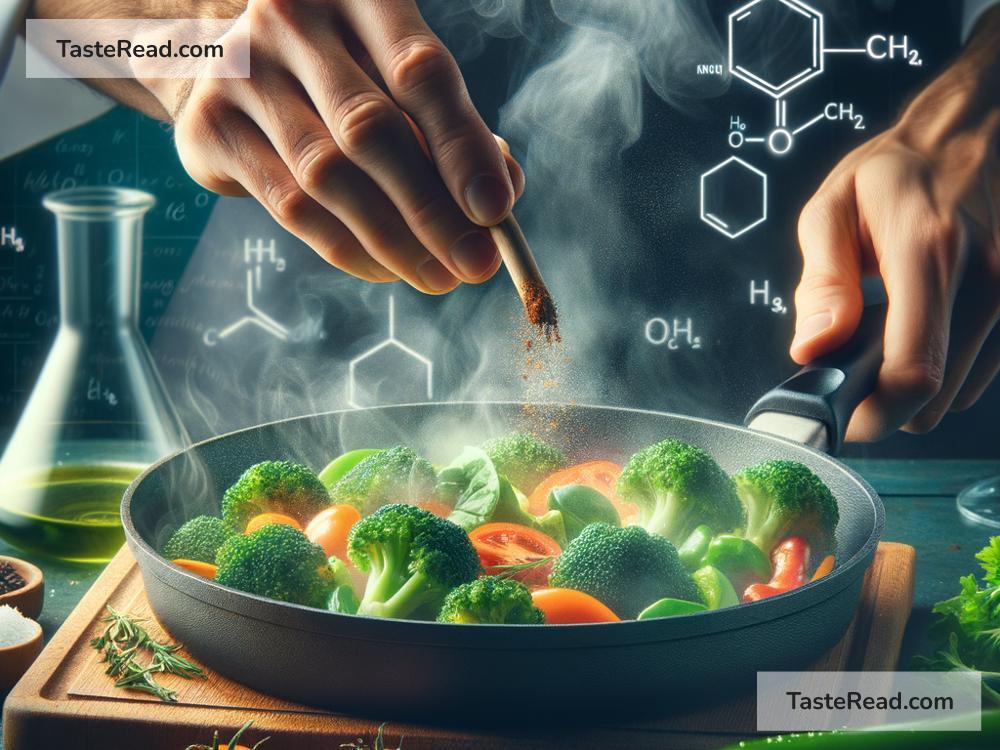The Science of Cooking with Organic Reactions: Techniques and Tips
Cooking isn’t just a chore; it’s a fascinating science that blends chemistry and creativity to produce tasty meals. But did you know that many of the most delicious dishes owe their magic to organic reactions? These chemical transformations involve the molecules in our food and result in texture, flavor, and aroma changes. In this blog, we’ll explore the science behind cooking with organic reactions and share practical techniques and tips to use this knowledge in your own kitchen.
What Are Organic Reactions in Cooking?
Organic reactions are chemical processes that involve compounds made primarily of carbon and other elements like hydrogen, oxygen, and nitrogen. In the world of cooking, these reactions turn raw ingredients into delicious, edible masterpieces. For example:
- Caramelization – The process that browns sugars and unleashes sweet, nutty flavors.
- Maillard Reaction – A reaction between amino acids (proteins) and sugars that creates the savory, browned crust on foods like bread, steak, and roasted vegetables.
- Fermentation – A natural chemical reaction involving microbes (like bacteria or yeast) that produce foods like yogurt, sourdough bread, and kimchi.
- Emulsification – A chemical process that combines two liquids that don’t normally mix, such as oil and water, to create smooth sauces like mayonnaise or vinaigrettes.
By learning about these organic reactions, home cooks can elevate their meals and explore the science behind their favorite dishes.
Techniques to Highlight Organic Reactions in Cooking
1. Caramelization: Sweeten Your Cooking
Caramelization happens when sugars are heated, causing them to break down and transform into complex flavors. Think of the golden exterior of crème brûlée or the natural sweetness of roasted vegetables.
Tips:
- Use moderate heat to allow sugars to caramelize without burning. High heat can cause bitterness.
- Experiment by roasting sweet vegetables like carrots, onions, and bell peppers to bring out their caramelized flavors.
2. Mastering the Maillard Reaction
The Maillard reaction creates the irresistible flavors found in seared steak, toasted bread, or crispy-roasted potatoes. When proteins and sugars in food combine under heat, they create those golden-brown surfaces we love.
Tips:
- Use dry heat methods like grilling, baking, or frying to encourage browning.
- Pat foods dry before cooking to remove excess moisture—the reaction works best when the surface of the food isn’t wet.
- Don’t overcrowd pans when cooking. Overloading traps steam and prevents browning.
3. Using Fermentation for Flavor
Fermentation is a centuries-old technique that relies on living organisms like yeast or bacteria to chemically transform food. It’s responsible for beloved foods like sourdough bread, cheese, kombucha, and pickles.
Tips:
- If you’re new to fermentation, start with something simple, like making homemade yogurt or pickles.
- Keep your work area clean to avoid unwanted bacteria in your fermenting foods.
- Don’t rush the process! Fermentation takes time, but the payoff is worth it.
4. Perfecting Emulsification in Sauces
Ever wonder how mayonnaise stays smooth and creamy? That’s emulsification—an organic reaction that binds substances like oil and water together using an emulsifier (such as egg yolks). Emulsification creates velvety sauces and dressings.
Tips:
- Add liquids one drop at a time when starting an emulsification process, then increase speed slowly. This helps the mixture bond and prevents separation.
- Use an emulsifier like mustard or egg yolk to make dressings or mayonnaise.
- Use a whisk or blender to speed up emulsification when making salad dressings.
Applying Organic Chemistry to Everyday Cooking
Understanding the science of organic reactions doesn’t mean you need a chemistry degree to cook. Instead, it allows you to approach cooking with curiosity and creativity. Here are a few practical ways to integrate organic reactions into your everyday meals:
-
Experiment While Cooking – Test out new combinations of ingredients and cooking techniques. For example, try browning butter (Maillard reaction) before adding it to baked goods for a nutty flavor boost.
-
Pay Attention to Heat – Many reactions, like caramelization or the Maillard reaction, require precise heat. Using a thermometer can help you control heat and improve results.
-
Practice Patience – Many of these reactions develop with time, whether it’s slow-roasting vegetables for caramelization or letting a sourdough loaf ferment for optimal flavor.
-
Share Your Creations – Celebrate the science in your cooking by sharing your food experiments with friends and family. Talk about the flavors and techniques; it can be fun and educational for everyone!
The Joy of Cooking Through Science
Cooking isn’t just about feeding ourselves—it’s about exploring flavors, discovering processes, and experiencing the art and science of food transformation. When you understand the organic reactions behind cooking, you unlock a new level of appreciation for how heat, ingredients, and time come together to create something delicious.
So, the next time you sear a steak or whip up homemade yogurt, remember that you’re a scientist in your own kitchen, conducting experiments every time you cook. And whether the result is a perfectly caramelized dessert or a tangy fermented pickle, it’s all part of the scientific fun of making food you love. Happy cooking!


